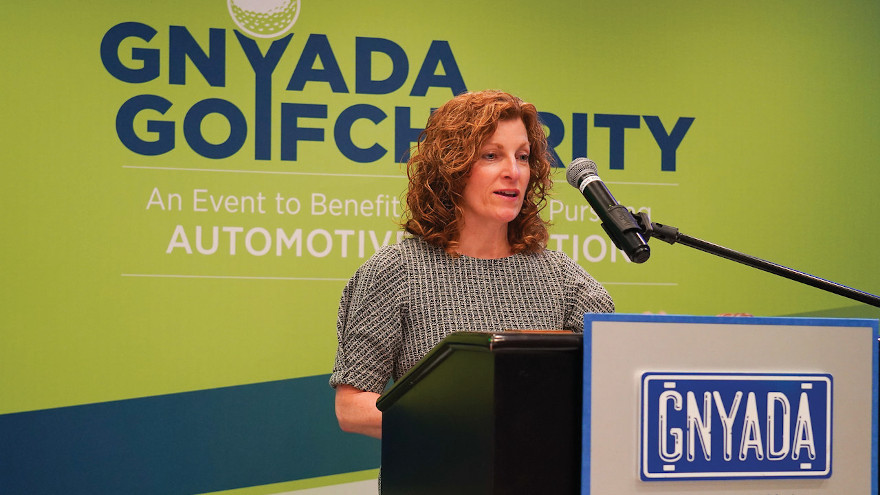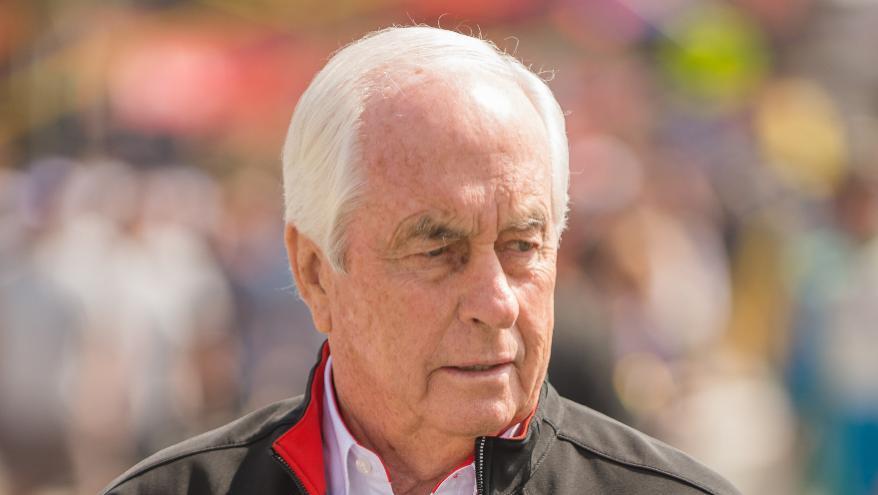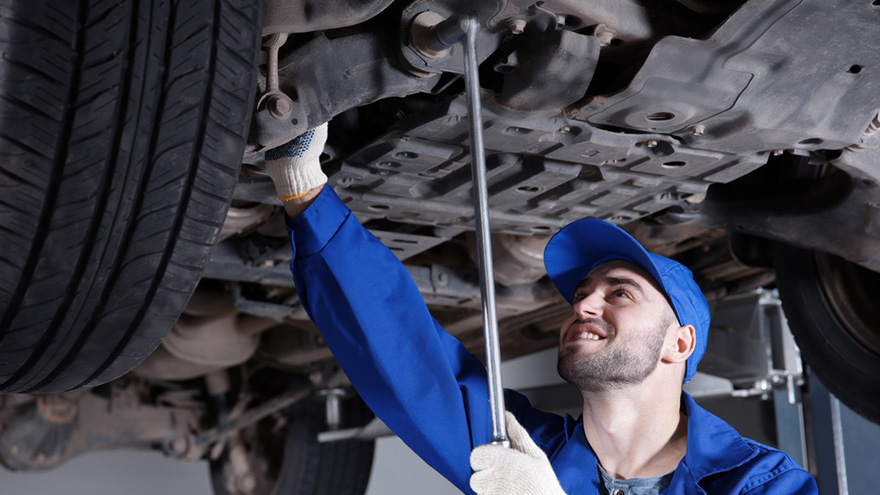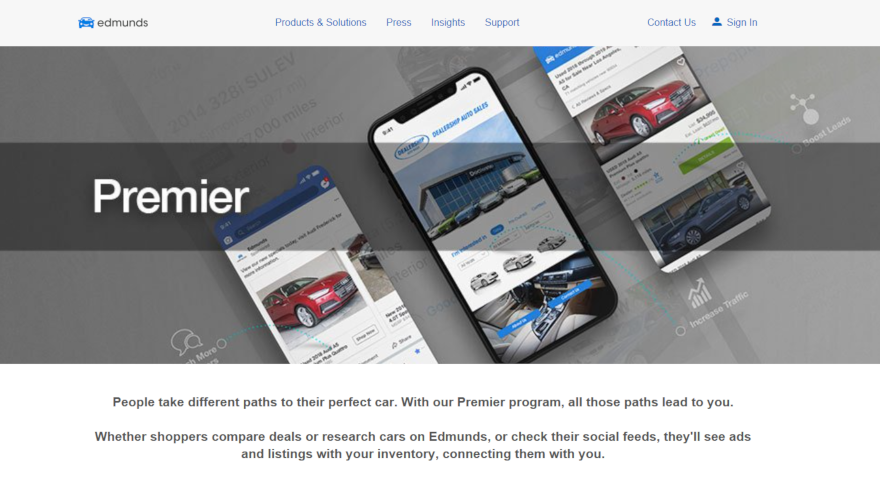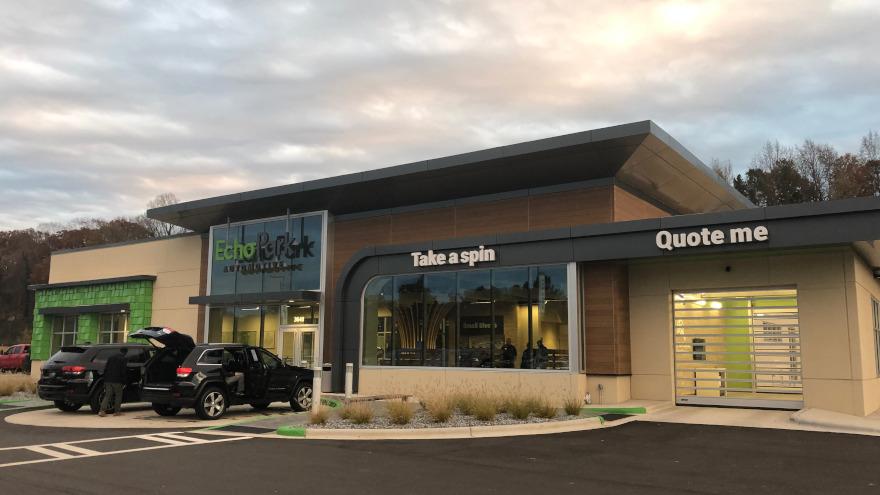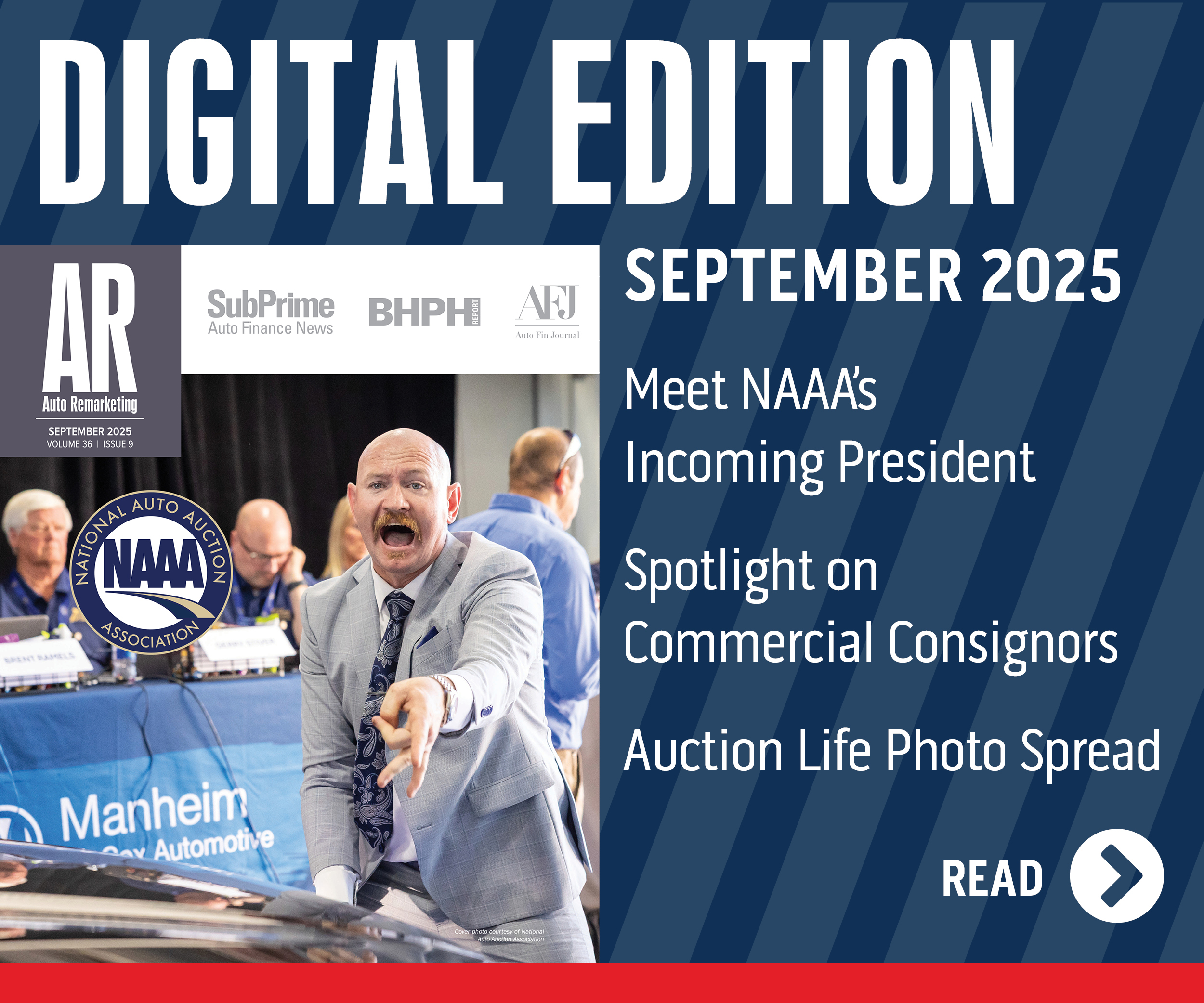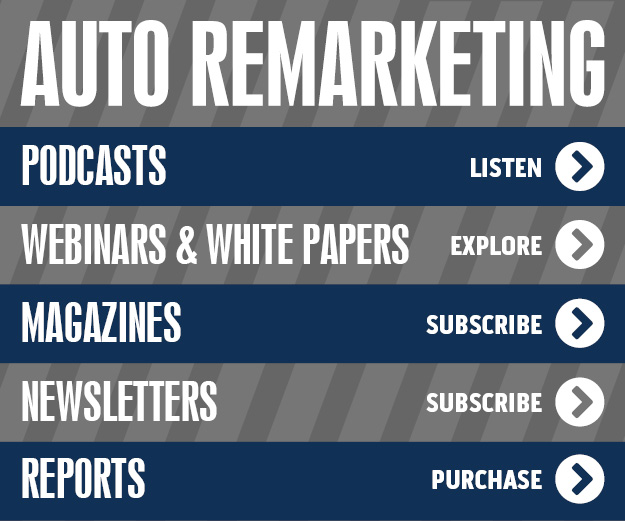It was 2009, and the auto industry was reeling from the impact of the Great Recession.
Jane Millman was standing in the showroom of what is now Riverhead Chrysler Dodge Jeep Ram in Riverhead, N.Y., when the dreaded letter arrived.
She breathed a sigh of relief when it confirmed that the family-owned dealership was not among the almost 800 Chrysler, Dodge, Jeep Ram dealerships that would be sacrificed under Chrysler’s Chapter 11 bankruptcy restructuring.
It was a “pivotal point” for Millman.
“I needed to be involved with all legislative aspects of my industry to protect the investment myself and my family have made in our business as a franchise dealer,” she said of the business that sold only Dodge and Ram vehicles before adding Chrysler and Jeep in 2017. It retailed 504 new and 198 used vehicles in 2018.
“I needed to be a voice to help promote and protect my industry. You can’t be a voice for your business unless you know what’s going on around you.”
Millman found her “voice” about six years ago when she became more active with the Greater New York Automobile Dealers Association, and she set her sights on becoming its leader.
Her voice was figuratively amplified in June when she was sworn in as the association’s chairwoman during GNYADA’s annual charity golf outing. The event raised over $110,000 for automotive education this year and over $1 million since 2005.
And, for the first time GNYADA’s history, women dealers hold three of the seven top leadership positions in the association.
Millman, 54, said she will use her platform to promote the financial and personal rewards of dealership careers as service technicians, sales persons and managers. A big part of that effort will be devoted to attracting more women to those jobs.
“I’m a believer that you have to have different genders, different nationalities; everybody comes from different places,” said Millman, who is the dealership’s secretary-treasurer and is in charge of its day-to-day operations. “Men and women have different perspectives as individuals and having those individual perspectives is what makes us grow.”
Leader, dealer advocate, role-model
GNYADA president, Mark Schienberg, said Millman brings a fresh perspective to the position. Her vision, management skills and experience in the automotive field, makes her a very strong leader, advocate for GNYADA members and role model, particularly to other women entering and advancing in the industry, he added.
“Prioritizing the need to recruit younger workers to fill the critical shortage and employment needs and join an automotive workforce that offers high pay with good benefits and long-term career opportunities will help strengthen the retail new-car industry and position us well in the future,” he said in an email statement.
Melanie Spare-Oswalt, president of Sayville Ford, in Sayville, N.Y. is an association vice chairwoman and Jordan Daiagi Harary, president of Leader in Cars Auto Group, which operates Mazda, Hyundai and Genesis franchises, is the association’s secretary. Leader in Cars is in New Rochelle, N.Y.
The association is working hard to publicize that it is offering scholarships to help young men and women pursue rewarding career paths as service technicians, Millman said. The strategy is to include a social media campaign and interviews with media outlets. GNYADA is working with the state of New York, which announced in April that it was creating a task force that will develop programs to train individuals to become auto technicians and enable participants to transition into the industry, she added.
“The association is very active with high schools, especially in New York City and with colleges,” she said.
Recruiting women: ‘not easy’
But Millman admits that attracting women to jobs in dealerships — as service techs or on the sales side — “is not an easy task.”
She also believes that many women who have current or past experience working in retail sales in clothing stores and other establishments and industries such as real estate can easily transition into dealership sales.
With many retail stores going out of business or reducing their location count, the auto industry has an opportunity to recruit women who were displaced or looking for a change, Millman said.
“I think it’s a great opportunity for women to move into our sales environment and have a successful career, a long-standing career and make more money than they did in retail establishments,” she said.
“It goes back to training and giving women the confidence. They’re already talking to customers. All they have to do is learn the product and help negotiate the sale.”
Millman’s father, Tony Strollo, who is president of the dealership, purchased it in 1976, when Millman was 11.
She took her father’s motto, “You need to work for what you are worth,” to heart at an early age and spent her teen years detailing cars at the dealership. But she didn’t mind, because “I liked making money,” she said.
She continued selling cars as a summer job during college.
Finding her future
But when Millman graduated in 1987 from Plattsburgh State University, in Plattsburgh, N.Y., armed with a bachelor’s degree in business marketing, “I didn’t think this was where my future was,” she said of the family business.
She moved to New York City after landing an outside sales job in telecommunications and moved up to become a sales manager. She liked her job, but the hours were long.
When she got married in 1995 and moved back to the Long Island area of New York where the leadership is located, her father said: “‘I think it’s time for you to come back,’” to the family business. She agreed.
“If I was going to be in outside sales and if I was going to work 50 or 60 hours a week, which I was doing, I might as well work with my family,” she said. “I have a great relationship with them.
“As we get older and a little bit wiser, we learn from our experiences. I saw it as my future.”
When she rejoined the family business, she started on the showroom floor selling cars. Gradually, her father started giving her more management responsibility. Around 2000 she was promoted to her first management position: general manager overseeing parts and service and in that timeframe became the dealership’s secretary-treasurer. Her job evolved to encompass the store’s day-to-day management.
In the mid-2000s Millman was on GNYADA’s board of directors but “took a step back from association” when she and her husband started a family.
About six years ago, after her children were older, Millman got involved with GNYADA in earnest.
“I came back to it with a whole new excitement of being involved with the association,” she said.
With the launch of CarSense Glen Mills in Pennsylvania, Penske Automotive Group welcomed a sixth used-vehicle supercenter in the U.S. and its 15th overall.
Penske’s six CarSense stores are all in New Jersey or Pennsylvania. Penske also has nine used-vehicle supercenters in the United Kingdom.
“We are delighted to open the new CarSense location in Glen Mills, Pa., delivering on our growth plan,” company chair and chief executive officer Roger Penske said in a news release.
“The Glen Mills area represents strong demographics which will help us scale the new location quickly while providing the opportunity to grow units in operation and services revenue and gross profit,” Penske said.
In the first half of the year, Penske’s used supercenters retailed 35,815 vehicles, versus 37,505 retail sales a year earlier. Revenue for the supercenters was at $626.5 million in the first half of 2019, compared to $677.8 million a year ago.
Among the financial details reported for second quarter 2019 by Group 1 and Asbury were perspectives on emerging vehicle technologies and their benefits to these companies’ service operations.
Group 1 said repair costs are not likely to “materially change” soon, but the nature of the (vehicle) components needing attention will shift.
“As vehicle complexity continues to increase, it becomes more difficult for do-it-yourself (“DIY”) and independent service shops to compete against us,” noted Group 1’s financial results highlights report. “Group 1 analysis suggests that we generate more revenue per repair order for vehicles with alternative powertrains.”
The company said its retention is higher for customers driving electric and hybrid-powered vehicles, versus those driving conventional internal combustion engine-powered ones.
“We’re actually excited about the future of electrification to the hybrid vehicles,” said John Hartman, senior vice president of operations for Asbury Automotive during the company’s earnings presentation.
Hartman agreed with Group 1’s assessment, that owners of emerging vehicle technologies “tend to be a higher retention customer. You make pretty good dollars on those vehicles. So, we see a good upside that goes as far as warranty.”
The complexity of these vehicles requires highly skilled technicians that Hartman believes the independent service market will find it difficult to duplicate and thus be able to service these vehicles.
“We see service retention numbers in the next five to seven years getting at rates that this industry has never seen,” Hartman noted. “For the lack of a better term, (these owners) really have to come back to a brand-certified dealer to work on these vehicles. To go to an independent would not be a smart choice.”
Used-car performance for the second quarter of 2019 over the same period last year was up slightly for public dealership groups Penske Automotive, Asbury Automotive and Group 1 Automotive, according to each group’s second-quarter financial filings, press releases and Q2 presentations to investors.
• Penske reported that same-store used vehicle retail revenue (U.S. operations) was up 1.2% with same-store used gross profit per unit at $1,445, down $101. F&I was $1,336 per unit, up $119, and service and parts revenue up 3.1%.
• Asbury reported that same-store (U.S) used-vehicle retail increased 1%, and gross profit decreased by 1%. It said F&I revenue and gross profit increased 7%, with parts and service revenue rising 8%, and gross profit increasing 6%.
• Group 1 noted same-store (U.S.) used-vehicle gross profit increased 5.6% or $63, to $1,197, reflecting the impact of its used-vehicle initiatives, launched last year. Used unit same-store sales increased 7% and 11% from the company’s Val-u-Line operations it started last year. Same-store F&I gross profit per retail unit increased $161, or 9.7 percent per unit, to $1,821, service and parts revenue was up 10.1%. Same-store total gross profit grew by 8.5%.
These groups expect to reap improving marketing efficiencies through new digital technologies and applications to lower their costs of sale. The hope that evolving automobile technologies will boost franchise service revenues and retain service customers longer.
Details on Penske results
Penske Automotive reported a 4.4% downgrade in same-store retail unit sales over the same period last year, with new-car and used-unit sales down, respectively, 9.0% and 0.5%. Same-store retail revenue for new cars was down 6.2% and up 1.2% for used cars.
Same-store (U.S.) used-vehicle sales were flat with last year, said Roger Penske, the group’s chairman, chief executive officer and director, during the company’s earnings call.
“Although same-store total unit sales were down in the U.S., ‘variable gross profit per unit’ increased nearly 4% to $125 per unit during the quarter,” Penske said.
The company also operates five Used Car Supercenters in the U.S. Variable gross profit at these one-price, no-haggle stores were flat at $3,036 per unit.
Penske outlined several recent and new digital initiatives improving Penske stores’ performance, including its online sales resources, which feature nearly 60,000 vehicles online ready to purchase.
“In the second quarter, 33% of our new- and used-unit sales in the U.S. were from digital sources, and we continue to reduce our reliance on third-party leads,” Penske said.
Penske said stores’ service departments are responding well to online service appointment scheduling, and online payments continue to perform well for the stores. He noted that during the second quarter, stores’ business development centers and online inquiries generated 400,000 service appointments.
“Every service customer in the U.S. is sent an invitation to pay online,” Penske said, “and as a result, our online payments increased in the quarter by 68%.”
The company is also piloting digital retailing tools to improve collision services customer satisfaction by enabling digital estimating. This new tool allows service departments to update customers on collision repair progress via transmitted work-related images and video. The device also should help increase upsells, Penske believes. It also sees growth from consumers using its online purchasing tool, Preferred Purchase.
Asbury on quarterly performance
David Hult, Asbury Automotive president and CEO, presented an upbeat tone in the company’s written second quarter 2019 operational summary. “In a lower SAAR environment, we grew revenue 5%, delivered 10% parts and service revenue growth, improved our SG&A (Selling, General & Administrative Expense) as a percentage of gross profit 60 basis points, and grew adjusted EPS (earnings per share).
“While we experienced new vehicle margin pressure, we were able to grow our total frontend yield by over $50 per vehicle,” Hult said.
For same-store performance, Asbury reported for the quarter, a 2% increase in total revenue and 4% increase in gross profit, with used-vehicle retail revenue up 1%, through gross profit dipped by 1%. Asbury documents noted too that same-store F&I revenue and gross profit increased 7%, while parts and service revenue grew by 8% in the quarter, with gross profit increasing 6%.
Digital enhancements are playing a role in improving results for Asbury.
“We are making good progress executing on our vision to be the most guest-centric company in the automotive industry,” Hult said during the company’s second-quarter 2019 earnings call. “Our omnichannel approach is multidimensional and encompasses all aspects of the business.”
This progression has included, he said, the creation of an in-house digital marketing team in late 2015, resulting in improved social and mobile marketing and marketing spend. Push Start, the company’s online retailing tool, along with preferred financing alternatives and an online service-transaction solution, were all initiated in 2017. In 2018, Asbury launched its digital collision estimator.
“We dedicated a store to become our pilot dealership of the future where we are testing alternative technologies and processes to optimize the model for the future,’ Hult said. “We expect [these tools] to enhance both transparency and the guest experience while at the same time reducing the number of inbound (service-related) status calls.”
John Hartman, Asbury’s senior vice president of operations, added additional detail.
“Our Push Start online sales are up 29% from the prior year and represent approximately 9% of our total retail unit sales,” he said. “We believe that this is partly attributable to new functionality that we have added to Push Start. The growth resulted too from the online loan marketplace that David (Hult) described earlier that gives customers the ability to scan driver’s license registration insurance documents and the ability to upload trade and photos for an appraisal.
“We are excited about the continued development of our omnichannel-driven growth strategy that allows us to leverage our brick and mortar assets to be the most guest-centric automotive retailer in the industry,” Hartman said. He attributed omnichannel success as well to staff investments, including, since Jan. 1, new compensation and benefit plans, a 40-hour workweek, extended vacation time and paid maternity leave.
“The early indications are that our enhanced benefits packages are having a favorable impact on both recruiting and retention,” Hartman said.
Group 1 talks Q2 results
Group 1, same-store used vehicle retail units increased 7%, with a 17% decrease in wholesale units, according to the group’s used vehicle overview. It said the company’s shift from wholesale to retail channels drove a 12% increase in same-store total used gross profit. Overall, its used-car Val-u-Line operations are showing for second quarter an 11% increase in retail unit sales, compared to a 5% historical average, from the prior year.
“We are very pleased with our U.S. performance as the numerous initiatives we have implemented across our used-vehicle and service departments continue to gain traction and deliver strong same-store growth,” said Daryl Kenningham, Group 1’s president of U.S. operations.
“We are particularly pleased with the increased level of hiring and retention of service technicians and advisors, with same-store headcount for both positions increasing by double-digit percentage points compared to the prior-year period,” Kenningham said.
Earl Hesterberg, Group 1 president and CEO, noted, in the company’s earnings report press release, how well the company performed in the U.S. “despite a soft new-vehicle market.
“Record same-store parts and service revenue growth of more than 10% and record F&I per retail unit profitably drove same-store gross profit growth of 8.5%,” he said.
According to Group 1, the company implemented a four-day, flexible work schedule across its 65 U.S. stores, with another 10 dealerships to be included by next quarter. Implemented also to address turnover, customer satisfaction, and to add capacity via extended hours, Group 1:
• Increased the fixed component of adviser pay
• Created a well-defined career path for advancement
• Implemented an in-house Service Advisor University to trained advisors
• Deployed an in-house Service Manager University
Group 1 also cited online retailing strategies for driving performance. Group 1’s second quarter overview noted that both Internet leads and organic traffic for yielding positive results and that 26% of all U.S. service appointments are now scheduled online.
Within a week of promoting an executive to be its senior vice president, chief innovation and technology officer, Lithia Motors looked within its ranks again to find its next senior vice president and chief financial officer.
The dealer group announced on Tuesday that it has promoted Tina Miller to the SVP and CFO position.
Lithia said Miller has held a variety of accounting, financial and audit leadership roles of increasing responsibility at the company for nearly 15 years. Most recently, she served as chief accounting officer and interim principal financial officer.
In her new role, Lithia explained Miller will oversee the accounting, tax, corporate finance, financial planning and analysis, risk management and treasury functions.
“Tina’s finance and accounting leadership and her talented teams have been instrumental in us achieving sector-leading growth while maintaining low leverage,” Lithia president and chief executive officer Bryan DeBoer said.
“After a nationwide search, we are pleased to be able to promote from within our company and we welcome Tina’s perspectives to our senior management team,” DeBoer continued.
“Financial discipline is foundational to our unique growth strategy,” DeBoer added. "Tina’s acute understanding of our capital philosophy, operating model, proprietary performance measurements and network optimization plans will help us accelerate our efforts to increase market share.”
As previously mentioned, Lithia also elevated another executive when it picked George Hines to be senior vice president, chief innovation and technology officer.
Group 1 Automotive enhanced its financial resources this week to bolster its inventory and for other projects.
The dealer group announced that it has completed a $1.8 billion five-year revolving syndicated credit facility with 23 financial institutions that will expire in June 2024. Group 1 said this facility can be expanded to $2.1 billion total availability.
Management noted the revolving facility will provide $1.44 billion for inventory floorplan financing. The facility will also provide $360.0 million for working capital, acquisitions and general corporate purposes, of which up to $125.0 million can be borrowed in either Euros or Pounds Sterling.
Group 1 explained new-vehicle and used-vehicle floorplan interest rates are at one-month LIBOR plus 110 basis points and one-month LIBOR plus 140 basis points, respectively.
According to a news release, lenders in the syndicated facility include four manufacturer-affiliated finance companies and 19 commercial banks. The four manufacturer-affiliated finance companies are:
— Mercedes-Benz Financial Services USA
— Toyota Motor Credit Corp.
— BMW Financial Services
— American Honda Finance Corp.
The 19 commercial banks are:
—U.S. Bank
—Bank of America
— JPMorgan Chase
— Wells Fargo
— Comerica Bank
— BBVA USA
— Branch Banking & Trust
— MassMutual Asset Finance
— TD Bank
— Bank of the West
— KeyBank National Association
— NYCB Specialty Finance Company
— Capital One
— PNC Bank
— Barclays Bank
— Zions Bancorporation (Amegy Bank)
— Ally Bank
— Amarillo National Bank
— Bank of Oklahoma
The syndication was arranged through U.S. Bank, JPMorgan Chase, BofA Securities and Wells Fargo Securities.
“The extension of our $1.8 billion revolving facility further strengthens Group 1’s balance sheet by locking in ample, reasonably priced capital for vehicle financing and acquisition growth for the next five years,” Group 1 senior vice president and chief financial officer John Rickel said.
“The commitments made by our lenders are a testament to the strong relationships we have established with our financial partners over the years,” Rickel went on to say.
On Tuesday, Morrie’s Automotive Group announced the appointment of Lance Iserman as chief executive officer of the organization that represents 14 brands at 13 different dealership locations.
Iserman brings more than 30 years of leadership experience in the automotive dealership industry to his new role as CEO of Morrie’s. Most recently, Iserman served as chief operating officer at AutoNation.
Iserman will assume the CEO role beginning on July 1, according to a news release.
“Morrie’s is a great company with exceptional people and a sterling reputation built over the last 50 years,” Iserman said. “Morrie’s tenured team and strong culture are key advantages as the industry continues to become more competitive. I’m thrilled to be joining Morrie’s as we look to build on its solid foundation and continue to grow in the years ahead.”
Following the appointment of Iserman, Morrie’s interim CEO Ken Czubay will remain a board adviser.
“We could not have found a better person to assume the CEO position than Lance,” Czubay said. “He has all the tools and experience to be hugely successful and I look forward to actively supporting him as he transitions to his new role.”
Iserman joined AutoNation in 2001 as a CFS director and progressed through increasingly senior roles, including general sales manager, general manager, market president and region president. Earlier in his career, he held various roles in the automotive industry at Midway Auto Team and VanTuyl Automotive Group.
Morrie’s has dealerships located in Minnesota and Wisconsin, representing:
—Aston Martin
—Audi
—Bentley
—Cadillac
—Ford
—Genesis
—Hyundai
—Lincoln
—Mazda
—Maserati
—Nissan
—Mercedes-Benz
—Subaru
—Volkswagen
“We carried out a rigorous nationwide selection process over the last few months,” said Alan Dachs, president of Fremont Group, which is the majority owner of Morrie’s. “We are thrilled to have found Lance. He is a highly experienced and respected operator who for more than 30 years has assumed progressively more senior management roles in the auto dealership industry.
“We look forward to working with him to build an industry-leading automotive group in the years ahead,” Dachs went on to say.
Because Edmunds provides guidance across all areas of the car buying process — including reviews, shopping tips, deal ratings and payment calculators — the company says it attracts a “highly engaged, ready-to-buy audience.”
Edmunds says that its recently launched Premier program takes advantage of that audience, highlighting dealer inventory and then “funneling” shoppers directly to a dealer’s own website.
The company describes Premier as a dealer marketing program that it says can bring more ready-to-buy car shoppers directly to a dealer's website or storefront.
Edmunds says Premier goes beyond leads and listings. It uses targeted advertising and combines that with what Edmunds says is its strong audience data. That connects shoppers with a dealer’s inventory at every part of the process of buying a car online, according to the company.
Highlighting new and used inventory on Edmunds and across partner sites, Premier brings what it describes as an efficient and effective marketing program that it says helps dealer partners to connect with shoppers.
With Premier, dealer partners receive direct website traffic through targeted social advertising. Premier also brings that traffic through promoted display ads on Edmunds and dedicated emails. The program, through the use of web chat, text and Facebook Messenger on a single platform, allows dealers to connect with shoppers.
Schomp Automotive marketing director James Kurtenbach said in a news release that his company sought to improve an important channel after Facebook removed automotive endemic audiences from its platform.
“Edmunds stepped in and not only met our needs, but exceeded the results we were getting previously. This, along with considerable improvements in the usability of the Edmunds platform, has improved our inventory visibility and in-store performance.”
Edmunds vice president of product innovation Nick Gorton said that with Premier, the company recognizes that the path to buying a new car is more often a winding one rather than a straight one.
“From initial research on Edmunds to scrolling through social media sites, shoppers move around frequently when looking for their next new car, but Premier is designed to keep a vehicle in front of a shopper whenever and wherever they are on this path and then deliver them to a dealer knowledgeable, confident and ready to purchase.” Gorton said.
AutoNation made a “strategic decision” to focus on new-vehicle margins and finance and insurance sales, Lithia Motors expects to resume buying dealerships after a year-long hiatus and both companies are laying groundwork to enhance their digital retailing platforms.
That is according to the companies’ chief executives during their respective first-quarter earnings calls in April.
Carl Liebert, who took over the helm at AutoNation from long-time CEO Mike Jackson in March, said he is “excited and energized” about new technology opportunities that enable employees to digitally perform tasks that are currently paper-based or done manually.
The company also wants to improve the experience for customers who use their mobile devices to set up service appointments and shop for vehicles, he said.
“We’ve got several thoughts, and we’re working on several pilots that we could use,” Liebert said during AutoNation’s April 26 call.
He also said as the company learns new capabilities down the road it looks “forward to sharing those with you when we have those up and running.”
Lithia Motors CEO Bryan DeBoer said internal digital transformations that are being piloted at baierl.com and “soon to launch” at lithia.com and Lithia’s partnership with Shift Technologies, a San Francisco-based digital retailer, are examples of his company’s latest e-commerce initiatives.
Baierl.com is the website of Baierl Automotive, a dealership group Lithia acquired in 2017. The site advises consumers they can buy their “car completely online” and have it delivered within a 100-mile radius around Pittsburgh.
“Shift provides an entirely new channel of direct-to-home vehicle purchasing and selling experiences,” DeBoer said during the April 24 call.
DeBoer said only three Lithia stores have “interaction” with Shift, and its impact on the company’s current used-car business is very small — about 50 to 75 used vehicles were procured using Shift’s technology in the quarter, he said.
But DeBoer also noted that the partnership with Shift is allowing Lithia “to learn how a digital company thinks and how they are so in tune with consumer behaviors and how to monetize those consumer behaviors through their technology.”
Lithia invested $54 million Shift in 2018.
Lithia targets Midwest, Southeast
DeBoer said Lithia actively monitors 2,600 dealership acquisition targets that have the earnings potential that the company seeks. He said Lithia would like to add stores in the Midwest and Southeast.
“I think it’s fairly clear that a lot of the (venture capital) and private equity money seems to be leaving the space and having a fair amount of troubles, which is breaking some stores loose and obviously makes the buying environment much less competitive,” he said. “So prices seem to be coming back into the realms of reality.”
In the quarter, Lithia’s revenue increased 7.1% to $2.84 billion, and net income rose 8.3% to $56.4 million, buoyed by strong same-store increases in its used-car, finance and insurance and service, parts and body shop businesses.
Lithia’s total gross profit rose 10.4% to $450.7 million. F&I gross profit was up 10.3% to $117.5 million, and parts, service and body shop gross profit was up 15.2% to $159.5 million.
The company’s overall new – unit sales dropped 4.3% to 39,695, but average gross profit per new unit retailed grew 3.3% to $2,165.
In the same period, overall used unit retail sales increased 12.6% to 40,675, and average gross profit per used unit retailed was up 2.0% to $2,079.
On a same-store basis, new unit sales dropped 6.8% to 37,540, but average gross profit per new unit was up 1.5% to $2,136.
Retail used unit sales were up 9.7% to 38,568, and average gross profit per used unit was up 2.3% to $2,106.
Also on a same-store basis, total gross profit was up 7.0% to $427.1 million; F&I gross profit was up 8.8% to $113.0 million, and parts, service and body shop gross profit was up 10.5% to $149.7 million.
Over at AutoNation
Vehicle sales, net income and revenue all declined at AutoNation in the quarter, but per- vehicle gross profit increased, the company reported.
Liebert said AutoNation’s focus on new-vehicle profit margins rather than volume is to make sure it has the right inventory for customers and is not saddled with excess inventory at the end of the month.
“This strategy optimized our total variable gross profit per vehicle retailed, which was up $200 or 6%, and our new-vehicle gross profit per vehicle retailed, which was up $134 or 8% compared to a year ago,” said Liebert during the company’s conference call.
“Moving forward, we will remain committed to running our play while seeking the optimal balance between new-vehicle pricing and volume.”
Reflecting back on having managed manufacturing operations in “highly dependent overhead businesses like appliances,” Liebert said he knows that such a strategy that curtails the number of vehicles the group buys can create friction with manufacturers that want to run “factories all out” and have targets to hit.
But AutoNation is being upfront with auto manufacturers about its strategy, which is to create a transparent and trustworthy experience for its customers, he said.
“I think it’s a balance that we have to strive for because of the customer experience we want to deliver in our stores, and it’s one of the reasons I’m so proud of our operating team,” he said.
Liebert anticipates “more friction-filled conversations down the road, and we’re going to have to make those choices with our OEM partners.”
In the first quarter, AutoNation’s overall revenue fell 5.3% to $4.98 billion and its net income slid 1.8% to $92.0 million.
Weaker sales environment, higher interest rates
Improvements to gross profits in the quarter were partially offset by decreases in new vehicle unit volume which was impacted by a weaker new –
vehicle sales environment, higher interest rates, rising vehicles prices and an increase in the off-lease supply of late-model used vehicles, the company said.
AutoNation’s overall gross profit of $849.2 million was up 0.8%, new-vehicle gross profit dropped 6.0% to $121.9 million and retail used-vehicle gross profit rose 2.8% to $84.3 million.
Overall F&I gross profits slipped 1.8% to $236.5 million, and parts and service gross profits increased 3.5% to $398.9 million.
In the quarter, AutoNation’s overall new unit sales dropped 14.4% to 63,513, but average gross profit per new unit retailed grew 9.8% to $1,919.
In the same period, overall retail used unit sales dropped 1.7% to 61,171, but average gross profit per used unit retailed was up 4.6% to $1,378.
Overall average F&I gross profit per new and used unit retailed increased 7.4% to $1,897.
On a same-store basis, AutoNation’s new unit sales dropped 13.2% to 62,897, but average gross profit per new unit retailed rose 7.5% to $1,914.
The company’s retail used unit sales dipped 0.5% to 60,230, but revenue gross profit per used unit retailed increased 3.5% to $1,385.
On a same-store basis, average F&I gross profit per new and used unit retailed rose 7.0% to $1,904.
EchoPark Automotive is moving from the “Petri dish” to “significant growth mode,” says its president Jeff Dyke, who holds the same position with parent company Sonic Automotive.
Sonic’s standalone used-car store chain, which is now profitable and expected to break $1 billion in revenue this year, will likely open another location in 2019, something it previously had not planned to do this year, but now intends to given the progress EchoPark has made.
That addition would bring the total EchoPark store count to nine. The store count is likely to climb to 10 to 12 locations in 2020.
“It all just began to come together in the first quarter for us. We’ve been working really hard at it, and praise to the team: They’ve done a very good job,” Dyke said during Sonic’s first-quarter earnings call in late April.
“And now, like (Sonic and EchoPark CEO) David (Smith) said in his opening, we can move from sort of our Petri dish stage, if you will, and figuring everything out, to now into a pretty significant growth mode as we move forward in 2019 and ’20.”
Sonic is not alone in this expansion. For example, Penske Automotive Group, which has 14 used-vehicle supercenters in the U.S. and U.K., plans to open four more in the second half of the year. Two will be in the U.S., two in the U.K.
In the States, Penske has one store under construction near Wilmington, Del., and is under contract with an existing store in a shopping center in New Jersey. The latter location would likely take four to five months to refurbish, chairman Roger Penske said during the group’s earnings call in April.
And the expansion isn’t just brick-and-mortar.
“In the next few months, our U.S. used supercenters will launch a new digital experience allowing customers to select a vehicle for purchase, appraise trades, obtain financing and securely upload lender requirements, electronically sign documents and schedule an express pickup or home delivery,” Penske said during the call.
“Also, later this year, our UK franchised dealerships are expected to launch a digital dealership platform for used vehicles that will provide 100% online functionality.”
Next moves for EchoPark
Going back to Sonic, it has targeted Los Angeles, Atlanta and Florida as the next spots for EchoPark. The plan is to start with one store per market as it expands, rather than expanding by adding multiple stores per market.
During the call, executives referenced the initial Dallas location, which was in the center of the city, but Sonic moved it 33 miles away to a former AutoNation mega-store facility and was able to essentially double the sales volume, Dyke said.
When they open in LA, Sonic plans to utilize an existing facility that the company already has on the franchised side of the business.
Sonic has found a facility in Atlanta, as well, and aims to have that EchoPark store open in the first quarter of next year.
“And then we’ll see which markets are going to come after that … we’re begging for an opportunity to go down to Florida and attack that market,” Dyke said. “So, we’ll see how it goes, but so far so good. We’re very excited about where we’re at.”
Interestingly enough, folks will travel to buy cars from EchoPark stores.
There are eight locations, but EchoPark is selling into 121 markets, CEO David Smith pointed out during the call. Many customers will visit the EchoPark website, set up the deal online and then pick up the car in store — with some even flying in to pick up the the car in person.
In fact, EchoPark has sold 35 cars into the Santa Fe, N.M., market this year, Dyke said. Its closest store to Santa Fe is in Colorado Springs, Colo., which is about a five-hour drive away.
During the call, executives were asked about the potential for home delivery for EchoPark. Dyke said there were no plans, as of now.
“If you go on to our EchoPark websites and you read what we do and what our model is, we sort of try to figure out what we’re not going to do. I know that sounds kind of ass-backwards, but at the end of the day, it keeps our costs really low,” Dyke said. “And by operating in a really low SG&A environment, it lets us wade further out and reduce our pricing. So we look every day on how much cheaper we can sell a car. And by doing that, we drive more and more traffic.
“We have so much traffic coming to the EchoPark stores right now, our opportunity is, let’s see what we can do to take advantage of all the traffic that’s coming into us now from all over the country.”
Smith added: “We listen to our guests. And our customers really enjoy — they like going on our website, EchoPark.com, and then they enjoy coming to the store and going through the experience and actually putting their hand on the vehicle they’re going to buy.”
Progress of existing locations
Of the current locations, the Dallas location is the most mature at this point,
“The thing is, every month we wake up, and it keeps selling more and more cars. We sold 1,600 cars out of that store in March and made over $2 million in profit,” Dyke said. “And our market share in zero to 5-year-old cars is double-digit, I think, in March. We keep growing our share. We’ve grown from 4.5% to 5% share up to a double-digit share.”
The Thornton, Colo., store in the Denver area is the second-most mature, selling more than 800 used cars a month and having made close to $600,000 in March, Dyke said.
And both of those locations continued that success, if not improved upon it, in April, he said. And even the newer ones are making big strides.
The Charlotte, N.C., store, which opened in the fall was profitable in its first full month. In March, it moved over 400 units and made close to $300,000. Likewise, the Houston store, which opened in December, sold between 460-470 used vehicles in March and broke even.
The time it takes for EchoPark stores to become profitable has also shortened. It had been eight months to a year, now it is less than six months, Dyke said.
Smith points out that in the early days, they were building greenfield facilities for these EchoPark stores. Now, Sonic is utilizing existing big-box stores, which reduces the time and cost it takes to open these locations.
In fact, Smith said the Dallas store was bought for less than half of what it cost to build the facility, which was vacant at time of purchase.
The Houston store, Dyke added, was previously a Ford store of Sonic’s.
Opening these stores for much less money is helping push profitability at EchoPark, as is the experience they’ve gleaned from running the stores and the inventory management and pricing algorithms, which are starting to pay off in terms of investment.
Changes to sourcing technique
One area where Sonic is looking to have a bit more room for profitability is on the sourcing side. Ninety percent of EchoPark vehicles are sourced at auction, with the rest being sourced through the CarCash app or off-the-street purchases.
Management was asked by an analyst if there was significant difference in upfront or total GPU per unit between inventory sourced at auction and inventory sourced from consumers.
“It’s why we want to buy more cars off the street,” Dyke said. “We certainly will make more money, if you miss out on the transportation fees and a lot of other fees that we get when you buy at auction.
“So the more we can shift that mix, the higher the front-end margin will be from an EchoPark perspective,” Dyke said.
He later added: “There’s nothing but upside the more that mix changes.”
Likewise, Penske is trying to add more street purchases to its used-vehicle supercenter inventory mix.
“You’ve heard that, I think, from everyone — certainly CarMax has done a real good job of that in the past,” Penske said. “I think we’re all going to accelerate that, because those cars seem to bring a little more margin.”
Impact on franchised used
Going back to the Sonic call, executives were asked whether the group’s franchised dealerships’ used-car operations were being impacted by EchoPark. Not in the least.
“That’s what’s so great about the used-car business,” Dyke said. “It’s so fragmented. There’s so much business out there that, for example, in our Denver market, we just continue to sell more and more and more cars, and yet our new-car stores in Denver, they’re having record years, too.
“And so, it has had zero impact, whether it’s the Houston market, whether it’s Charlotte, none of our stores have gone backwards in volume,” Dyke said. “As a matter of fact, it was a record volume first quarter for us this year on the franchised side, and in the markets where we have EchoPark stores. So, there’s been no degradation whatsoever.”

